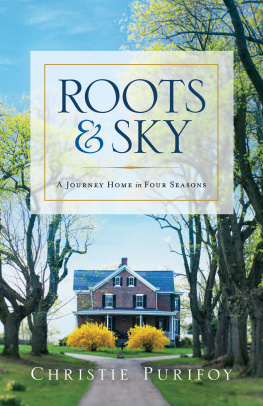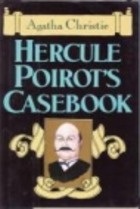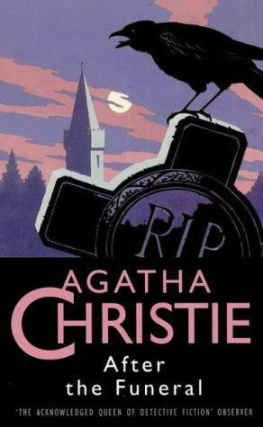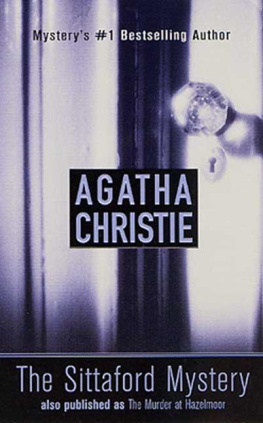Information about External Hyperlinks in this ebook
Please note that endnotes in this ebook may contain hyperlinks to external websites as part of bibliographic citations. These hyperlinks have not been activated by the publisher, who cannot verify the accuracy of these links beyond the date of publication.
In her thoughtful, grounded work, Purifoy explores placemaking and peacemaking, and how they often resemble each other. She calls us to shape and love places with all of ourselves and reveals how wesurprisinglymay be nourished and cared for in return, if were willing.
Anne Bogel, creator of Modern Mrs Darcy and host of the What Should I Read Next podcast
Is there a special prize for the best books about home? If so, I want to give it to Christie Purifoy. If you appreciate beautiful stories about house and home and all the many ways places change us as we go about changing them, Placemaker is the book youve been waiting for.
Myquillyn Smith, author of Cozy Minimalist Home and The Nesting Place
Carl Rogers said, What is most personal is most universal. I kept thinking of that while reading Christie Purifoys smart and beautiful book, Placemaker. Page after page of the winding path that led her family to a place called Maplehurst caused me to reflect on my own life, the places Ive sought to make, and how they in equal measure ended up making me.
John Blase, author of The Jubilee: Poems
In Placemaker, Christie Purifoy has given the world a deeply beautiful and profound work of art. Encircled here are stories of loss, grief, hope, and resurrection, that though rooted in both natural history and Christies own history, make room for us and manage to transcend the earthly world. Here we are reminded that placemaking is a vocational invitation from God for all of usregardless of where we live or how we make our way in the world. I will return often to this book, and know that with each reading, I will find new treasures to carry with me into the next season.
Kris Camealy, author of Come, Lord Jesus: The Weight of Waiting, and Holey, Wholly, Holy: A Lenten Journey of Refinement
In one sense, placemaking is a particular story rooted in a Pennsylvania farmhouse and shaded by the canopies of tall and aging trees. In another sense, its the universal story, swept up and carried in the river of human longing: to belong. As Purifoy so lyrically illustrates, placemaking isnt just what we make of our places. Its the spiritual practice of naming, of knowing, of remembering.
Jen Pollock Michel, award-winning author of Teach Us to Want, Keeping Place, and Surprised by Paradox
Christies words are lyrical beauty, an ode to place and peace. This book is a gentle call to all, no matter where God has us, to make place and cultivate hope.
Hannah Queen, author of Honey and Jam
Warning: this book will make you homesickfor people as well as for places. It also might make you wish for a green thumb. It will definitely move you toward your garden and your neighbors. Christie channels Madeleine LEngle and Tasha Tudor in this love letter to the history of places and the people who have made their home in them. When youre done you might be tempted to put Maplehurst into your GPS, because some places just have to been seen in person. If Christies words are anything to go by, I think it will be even better than you imagined.
Lisa-Jo Baker, author of Never Unfriended and co-host of the Out of the Ordinary Podcast
For my father, W.M. Mark Day
They will be called oaks of righteousness, a planting of the Lord for the display of his splendor.
Isaiah 61:3
ZONDERVAN
Placemaker
Copyright 2019 by Christie Purifoy
Requests for information should be addressed to:
Zondervan, 3900 Sparks Dr. SE, Grand Rapids, Michigan 49546
ISBN 978-0-310-35224-2 (softcover)
ISBN 978-0-310-35225-9 (ebook)
Epub Edition January 2019 9780310352259
Scripture quotations, unless otherwise indicated, are taken from The Holy Bible, New International Version, NIV. Copyright 1973, 1978, 1984, 2011 by Biblica, Inc. Used by permission of Zondervan. All rights reserved worldwide. www.Zondervan. com. The NIV and New International Version are trademarks registered in the United States Patent and Trademark Office by Biblica, Inc.
Scripture quotations marked NKJV are taken from the New King James Version. 1982 by Thomas Nelson. Used by permission. All rights reserved.
Scripture quotations marked NLT are taken from the Holy Bible, New Living Translation. 1996, 2004, 2015 by Tyndale House Foundation. Used by permission of Tyndale House Publishers, Inc., Carol Stream, Illinois 60188. All rights reserved.
Any internet addresses (websites, blogs, etc.) and telephone numbers in this book are offered as a resource. They are not intended in any way to be or imply an endorsement by Zondervan, nor does Zondervan vouch for the content of these sites and numbers for the life of this book.
No part of this publication may be reproduced, stored in a retrieval system, or transmitted in any form or by any meanselectronic, mechanical, photocopy, recording, or any otherexcept for brief quotations in printed reviews, without the prior permission of the publisher.
Published in association with William K. Jensen Literary Agency, 119 Bampton Court, Eugene, Oregon 97404.
Cover design: James W. Hall IV
Cover illustration: Lindley Library, RHS, London, UK/Bridgeman Images
Interior design: Kait Lamphere
Printed in the United States of America
19 20 21 22 23 24 25 26 27 28 29 /LSC/ 15 14 13 12 11 10 9 8 7 6 5 4 3 2 1
Contents
Guide
T he first trees I ever loved graced the cover of my tattered paperback copy of The Magicians Nephew, one of the Chronicles of Narnia by C. S. Lewis. Those trees were stick-straight, and the forest they made together was as perfectly planted as an orchard. In that stylized image, there was no prickly undergrowth to grab a childs legs, no low-hanging branches to tangle in her hair, no fallen logs to block her way. There were simply a comforting green roof and the quiet spaces between the trees. For most of my life, I have felt the joy of recognition whenever I encounter a forest with little or no scrub. Its a Narnian forest! I say. But no one has ever understood what I mean by that, and they are right to be confused. The forest on the cover of this particular edition of the book is not an image of Narnia, but of a portal where a young boy named Digory and his friend Polly discover they can enter many worlds, some old and dying, some young and growing.
Recently, when I began to wonder how trees had come to mean so much to me, I went in search of that old book. When I found it, I was startled to realize that the forest of my memory was the background of a very different picture. In the foreground, a witch queen emerges from a blue pond, her fists grasped tightly around Pollys long blonde hair. Polly, meanwhile, is holding hands with Digory, and the two children seem to be magically flying up and out of the forest behind them. Somehow, I had forgotten all of the foreground drama and remembered only the perfect tranquility of those background trees. It seems I have always longed for a place of deeply rooted peace.
No gentle forests ever welcomed me in the landscapes of my Texas childhood. The nearest thing I encountered was the pecan orchard on my great-grandfathers farm. I recall seeing it only once. I noticed it through the glass window of our family station wagon as my father drove us, his four children, to visit his grandfather. I had never seen an orchard before, and I didnt understand at first what I was seeing.





![Agatha Christie [Agatha Christie] - Problem at Pollensa Bay](/uploads/posts/book/140367/thumbs/agatha-christie-agatha-christie-problem-at.jpg)






